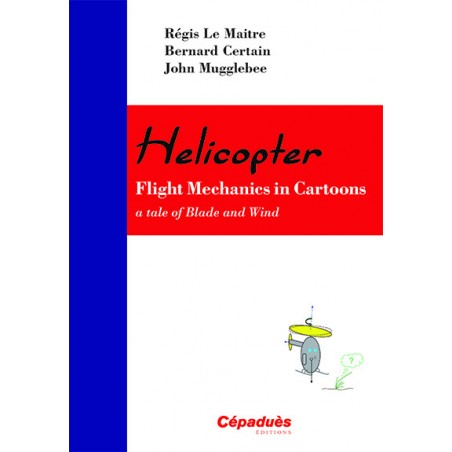






Commande avant 16h,
expédié le jour même (lu. - ve.)

Livraison express sous 48h.
| Référence : | 1076 |
| Nombre de pages : | 124 |
| Format : | 21x29,7 |
| Reliure : | Broché |
| Rôle | |
|---|---|
| Le Maitre Régis | Auteur |
| Certain Bernard | Auteur |
| Mugglebee John | Auteur |
THE Vehicle
The Function Shapes the Organ,
Hovering, the Theory
Velocity Field
Rotor Thrust
The Price of Lift
The Main Gearbox
The Aerodynamic Players
The Collective Pitch Control
Power
Rotor Wind
Rotor Wind and the Blade Element
Tail Rotor
Tilting the Rotor
The Lateral Dissymmetry of Relative Win8
The Pendulum
The Flapping Hinge
The Articulated Rotor in Hover
The Articulated Rotor and the Lateral Dissymmetry of Relative Wind
Excitation
Cyclic Pitch Variation
Cyclic Pitch Variation while Hovering
Cyclic Pitch Variation and the Lateral Dissymmetry of Relative Wind
Cyclic Pitch Control
Articulated Rotor or Rigid Rotor ?
The Drag Hinge
Stabilizers
Vibration Absorbers
Equilibrium in Hovering
Equilibrium in Cruising Flight
Autorotation and Relative Wind
Autorotation and Aerodynamic Forces
Eiffel’s Polar and Lilienthal’s Polar
Interlude
Flying
The Art of Flying
Pilot, Aircraft and Environment
The Piloting System
Hovering
Attitude Change
Pitch Moment and Roll Moment
Flying in Hover
The Lateral Dissymmetry of Relative Wind
The Lateral Dissymmetry of Relative Wind and Cyclic Action
The Dissymmetry of Induced Velocity
The Positive Effect of Translation
The Negative Effect of Translation
Straight and Level Steady Flight
The Attitude-Speed Relationship
The Power-Speed Curve
Controlling Level Flight
Climbing
Descending
A Question of Power
Transition
Vortex Ring
A Zero Sideslip Flight
Turning
Ground Effect
Air Referencing and Ground Referencing
Crosswind
Interlude
The Domain of the possible
The Flight Envelope
Maximum Takeoff Weight
Weight and Balance Limitations
Weight and Balance
Engine, Transmission and Rotor Limitations
Pressure, Temperature and Performance
Pressure, Temperature and Required Power
P/s, M/s
Pressure, Temperature and Available Power
Hover Out of Ground Effect (HOGE)
Hover In Ground Effect (HIGE)
Height-Velocity Diagram
Rate of Climb
Fuel Consumption
VNE
Other Limitations
Unusual Situations
The Vortex Ring State
Producing a Vortex
The Vortex Zone
The Dynamic Vortex
Preventing a Vortex from Happening
Recovery from a Vortex
Controlling the Yaw Axis
The Ergonomics of Yaw Control
Integrating a Tail Rotor
The Tail Rotor in Hover
The Tail Rotor in Forward Flight
The Positions of the Rudder Pedals
Tail Rotor and Wind
Tail Rotor Efficiency and Certification
Static Rollover
Dynamic Rollover
Preventing Rollover
Autorotation
Autorotation and Energy
Gliding Angle in Autorotation
Landing in Autorotation
Livres de l'auteur Régis Le Maitre
Livres de l'auteur Bernard Certain
Vous aimerez aussi